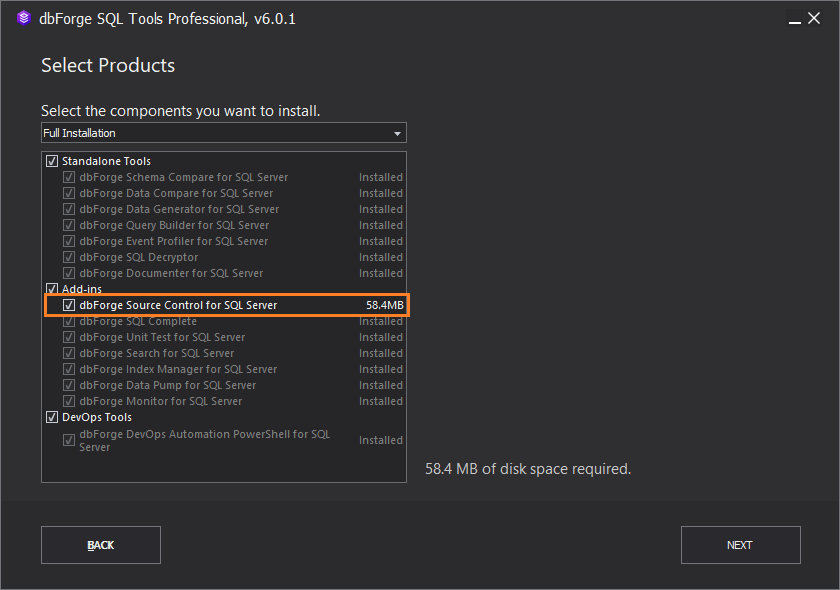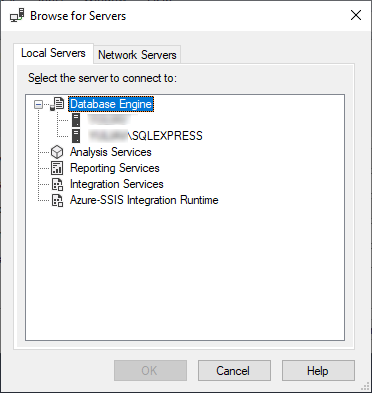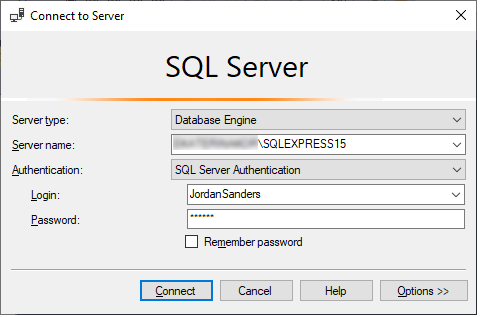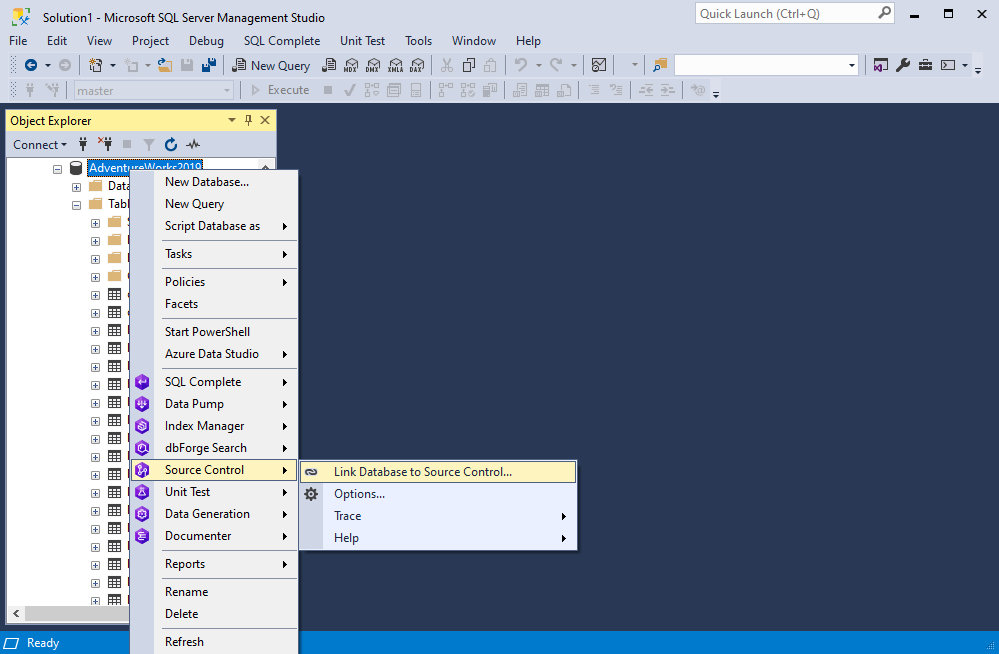How to start using Source Control
Source Control is an add-in for SQL Server Management Studio used to manage database changes in distributed and centralized version control systems: Azure DevOps Server (previously known as Team Foundation Server, a.k.a. TFS), Apache Subversion (SVN), TFVC, Git (including GitHub, GitLab, and Bitbucket), Mercurial (Hg), Perforce (P4), and SourceGear Vault. This can be done directly from the SSMS Object Explorer.
To start using dbForge Source Control
1. Go to the download page of dbForge Source Control for SQL Server.
2. On the Download page, click Get Trial.
3. On the Devart Identity Server page, sign in to your account and then click Download. If you don’t have a Devart account, then you need to sign up.
4. After the download is complete, go to the folder containing your downloads and run the sqltoolspro.exe file to install dbForge Source Control.
5. In the dbForge SQL Tools Professional installer, click Install.
Note
Prior to installing dbForge Source Control, make sure that SSMS instances are closed.

6. On the Select Products page, make sure that the dbForge Source Control for SQL Server check box is selected. Then, click Next.

7. Once the installation is complete, click Finish.
8. Open the Start menu and run Microsoft SQL Server Management Studio. To check the compatibility of dbForge Source Control with Microsoft SQL Server Management Studio versions, see Requirements.
9. In the SSMS Connect to Server dialog that opens, set up the server connection:
-
Server type: Database Engine is selected by default.
-
Server name: Select the server from the drop-down list. If you want to connect to a new server, click Browse for more from the drop-down list.
The Browse for Servers window displays local SQL Server instances installed on the computer and network servers. You can select either a local server or a network server for connection.

-
Authentication: Choose the authentication mode from the drop-down list.
- Windows Authentication
- SQL Server Authentication
- Active Directory - Universal with MFA authentication
- Azure Active Directory - Password
- Azure Active Directory - Integrated. For more information about how to connect to a database with the Azure Active Directory authentication, see Using Azure Interactive Authentication.
-
Login and Password: Enter the user credential details respectively.
-
(Optional) Remember password: Select the check box to save the password.
10. Click Connect.

11. In Object Explorer, right-click the database you want to connect to a source control system and select Source Control > Link Database to Source Control.

The Link Database to Source Control wizard opens where you can connect the database to the supported source control repository.
For more information about how to connect to a source control system, see the corresponding topics:
To learn more about SQL database versioning using dbForge Source Control for SQL Server, refer to the fllowing blog post: